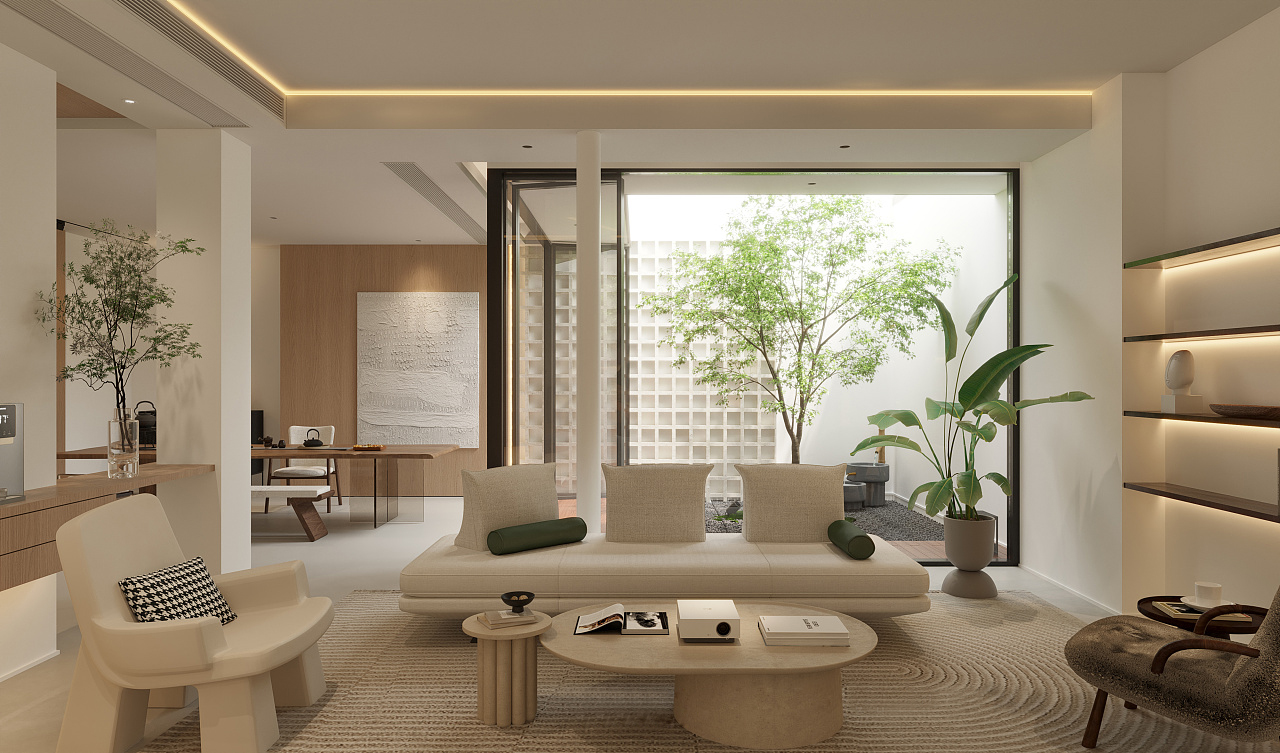
Home design is an essential aspect of creating a comfortable and visually appealing living space. Whether you're building a new home or renovating an existing one, thoughtful design choices can enhance both aesthetics and functionality. This guide explores key elements of home design, popular styles, and practical tips to help you create a stunning and efficient home environment.
Understanding Home Design
Home design encompasses various aspects, from architectural layouts to interior decor. A well-designed home not only looks beautiful but also enhances convenience, comfort, and efficiency. The key components of home design include:
1. Space Planning
Effective space planning ensures that your home layout maximizes available space while maintaining comfort and functionality. Consider factors like room proportions, traffic flow, and furniture placement to create a harmonious layout.
2. Color Schemes and Textures
Color plays a crucial role in setting the mood of a home. Neutral tones like beige, gray, and white create a calm and timeless look, while bold hues add vibrancy and personality. Mixing textures—such as wood, metal, and fabric—adds depth and character to interiors.
3. Lighting Design
Lighting is a critical element of home design that influences ambiance and functionality. Layered lighting—combining ambient, task, and accent lighting—helps create a dynamic and well-lit space. Chandeliers, pendant lights, recessed lighting, and floor lamps contribute to the overall design aesthetic.
4. Furniture and Layout
Choosing the right furniture enhances comfort and complements the overall design theme. Functional yet stylish furniture pieces help define spaces and improve usability. Arrange furniture to encourage conversation, optimize natural light, and facilitate movement.
5. Sustainable and Smart Home Features
Modern home design increasingly focuses on sustainability and smart technology. Energy-efficient appliances, solar panels, and smart home automation systems enhance convenience while reducing environmental impact. Incorporating eco-friendly materials and energy-saving solutions can make a home both stylish and responsible.
Popular Home Design Styles
Different home design styles reflect personal taste and lifestyle. Here are some popular styles to consider:
1. Modern Design
Modern homes feature clean lines, open spaces, and minimalist decor. This style emphasizes simplicity, functionality, and the use of natural materials like wood and stone.
2. Contemporary Design
Contemporary design evolves with time, incorporating current trends and innovations. It blends various styles, featuring bold color contrasts, sleek furniture, and artistic elements.
3. Traditional Design
Traditional home design embraces classic architecture, ornate details, and rich color palettes. Elements such as chandeliers, crown molding, and antique furniture characterize this timeless style.
4. Rustic Design
Rustic interiors highlight natural elements such as exposed wood beams, stone walls, and handcrafted furniture. This design style evokes warmth and a cozy, inviting atmosphere.
5. Industrial Design
Industrial-style homes showcase raw materials like brick, metal, and concrete. Open spaces, high ceilings, and exposed pipes contribute to the edgy, urban aesthetic of this design.
Practical Home Design Tips
Achieving a well-designed home requires careful planning and attention to detail. Here are some practical tips to help you refine your home’s design:
2. Color Schemes and Textures
0
Before starting a home design project, identify your preferred style and color palette. Creating a vision board with inspirations from magazines, social media, and home decor websites can help streamline your ideas.
2. Color Schemes and Textures
1
Aesthetics are important, but functionality should be a priority. Choose furniture and decor that align with your lifestyle needs, ensuring that your home is both beautiful and practical.
2. Color Schemes and Textures
2
Natural light enhances the appeal of any space. Use large windows, glass doors, and strategically placed mirrors to amplify light and make rooms feel more spacious.
2. Color Schemes and Textures
3
Each room should have a focal point, whether it’s a fireplace, an accent wall, a large piece of artwork, or a statement furniture piece. This helps anchor the room’s home interior design hong kong and draws attention to key features.
2. Color Schemes and Textures
4
Opting for high-quality materials ensures durability and enhances the overall look of your home. Whether it’s hardwood flooring, granite countertops, or designer lighting, premium materials elevate the elegance of any space.
2. Color Schemes and Textures
5
A clutter-free home looks more spacious and inviting. Incorporate smart storage solutions such as built-in cabinets, floating shelves, and multi-functional furniture to maintain a tidy space.
2. Color Schemes and Textures
6
Your home should reflect your personality and interests. Add personal touches such as family photos, travel souvenirs, and customized decor elements to make the space uniquely yours.
Conclusion
Home design is a blend of creativity, practicality, and personal expression. By focusing on key design elements, understanding different styles, and following practical tips, you can create a living space that is both stunning and functional. Whether you prefer a modern, traditional, or eclectic style, the right design choices can transform your home into a sanctuary of comfort and beauty.
